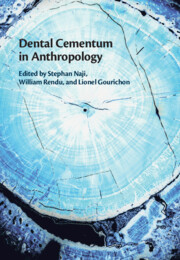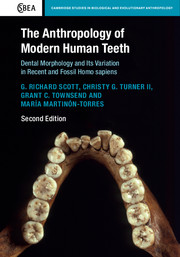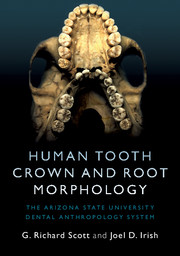Dental Cementum in Anthropology
Tooth enamel and dentin are the most studied hard tissues used to explore hominin evolution, life history, diet, health, and culture. Surprisingly, cementum (the interface between the alveolar bone and the root dentin) remains the least studied dental tissue even though its unique growth, which is continuous throughout life, has been acknowledged since the 1950s. This interdisciplinary volume presents state-of-the-art studies in cementum analysis and its broad interpretative potential in anthropology. The first section focuses on cementum biology; the second section presents optimized multi-species and standardized protocols to estimate age and season at death precisely. The final section highlights innovative applications in zooarchaeology, paleodemography, bioarchaeology, paleoanthropology, and forensic anthropology, demonstrating how cementochronology can profoundly affect anthropological theories. With a wealth of illustrations of cementum histology and accompanying online resources, this book provides the perfect toolkit for scholars interested in studying past and current human and animal populations.
- Presents state of the art knowledge in dental cementum studies, including biology, methods, and applications, in one volume
- Includes inter-disciplinary perspectives, demonstrating the potential of cementochronology and illustrating how different disciplines can interact to produce meaningful knowledge
- Contains accompanying online resources, including comparative cementum illustrations and analytical demographic algorithms
Product details
January 2022Adobe eBook Reader
9781108756631
0 pages
This ISBN is for an eBook version which is distributed on our behalf by a third party.
Table of Contents
- Part 1. The Biology of Cementum
- Introduction: Cementochronology in chronobiology
- 1. A brief history of cemental annuli research, with emphasis upon Anthropological applications
- 2. Development and structure of cementum
- 3. Insights into Cementogenesis from human disease and genetically engineered mouse models
- 4. A comparative genetic analysis of acellular cementum
- 5. Pattern of human cementum deposition with a special emphasis on hypercementosis
- 6. Recent advances on acellular cementum increments composition using synchrotron x-radiation
- 7. Incremental elemental distribution in chimpanzee cellular cementum: insights from synchrotron x-ray fluorescence and implications for life history inferences
- 8. Identifying life-history events in dental cementum, a literature review
- Part II. Protocols
- 9. Cementochronology for archaeologists. Experiments and testing for an optimized thin section preparation protocol
- 10. Optimizing preparation protocols and microscopy for Cementochronology
- 11. Cementochronology protocol for selecting a region of interest in zooarchaeology
- 12. Tooth cementum annulations method for determining age-at-death using modern deciduous human teeth: challenges and lessons learned
- 13. The analysis of tooth cementum for the histological determination of age and season at death on teeth of us active duty military members
- 14. Preliminary protocol to identify parturitions lines in acellular cementum
- 15. Toward the non-destructive imaging of cementum annulations using synchrotron x-ray microtomography
- 16. Non-invasive 3d methods for the study of dental cementum
- Part III. Applications
- 17. Using Cementochronology to discuss the organization of past Neanderthal societies
- 18. Investigating seasonal competition between hominins and cave hyaenas in the belgian ardennes during the late pleistocene: insights from cementum analyses
- 19. Cementochronology to the rescue: osteobiography of a middle woodland woman with a combined skeletal dysplasia
- 20. Estimating a mortality profile of fisher-gatherers in Brazil using Cementochronology
- 21. Cementochronology: a solution to reconstructing past populations' mortality profiles using individual age-at-death estimates
- 22. Assessing age-related mortality at petra, jordan using Cementochronology and hazard modeling
- 23. Shaping age at death distributions by applying tooth cementum analysis to the early medieval graveyard of lauchheim (Germany)
- 24. Back to the root: the coming of age of Cementochronology
- Index.






